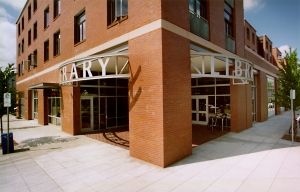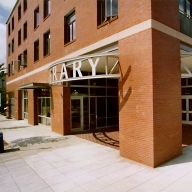What are the benefits of a regulatory framework that promotes sustainable and equitable development?| Developers interested in building at a higher density near transit and
other location-efficient areas often face a number of regulatory
obstacles, including restrictions on density or the ability to mix
retail and residential development and unrealistic and unnecessary
parking requirements. Local governments can waive requirements on a
case-by-case basis -- for example, a zoning appeals board may grant a
special permit to reduce the number of required parking spots for senior
housing or a transitional housing development or issue a zoning variance to allow higher-density or mixed-use
development on an appropriate lot. These property-level adjustments can
play an important role in promoting sustainable and equitable
development. However, case-by-case adjustments are expensive for the
locality and reduce predictability for developers, dampening the
potential for the larger-scale changes that can help transform a
neighborhood. |

Photo Credit Fred Wilson, Courtesy of Multnomah County Library
|
Ideally, standards and requirements for new development and redevelopment would be regulated on a larger scale -- at the community or, in the case of transit-oriented development, the corridor or regional level. Even modest adjustments to the underlying regulatory framework can help to make individual projects more feasible, and these changes can make the difference in whether an affordable housing project pencils out. Establishing a regulatory framework that aligns with location-efficient, sustainable development priorities may require the adoption of new programs or amendments to existing policies and ordinances. These changes may initially be more challenging to implement than adjustments for individual parcels, but over the long term, adoption of a comprehensive community-wide approach creates a clear vision for the direction of future development and provides greater predictability for developers, facilitating the changes the community desires.
What problems does regulatory reform solve?The introduction of a new transit station can radically transform a neighborhood, as can reinvestment that promotes better access to existing transit hubs or other local amenities. In many metropolitan areas, private developers will eagerly respond to market opportunities created by this new investment. The tools described in this section help to remove obstacles to the successful creation of location-efficient neighborhoods, as well as to the creation or preservation of homes in these neighborhoods that are affordable to families at all income levels. For example, updated
rehab codes that enable property owners to redevelop vacant and deteriorating properties at a reasonable cost (a) promote re-investment in existing neighborhoods by removing barriers for developers who might otherwise pursue greenfield projects in outlying areas, and (b) increase the likelihood mission-driven or non-profit developers can pursue these rehab opportunities to create or preserve affordable homes.
Where are regulatory changes most applicable?Some of the reforms described in this section can be applied across an entire metro area, while others work best when limited to specific areas close to public transit stations. A reform like lowering the number of off-street parking spots required to be provided by new developments in order to reduce the costs of producing new housing may make sense only in areas with robust bus or train service where families make more of their trips using public transit. On the other hand, vacant and abandoned properties can be found in all neighborhoods, and streamlining processes for the redevelopment of these homes can help to stabilize residential neighborhoods throughout the metro area as well as revitalize neighborhoods near transit and in village and town centers.

Learn more about creating a supportive regulatory framework
Go back to learn about other ways to promote sustainable and equitable development
|
